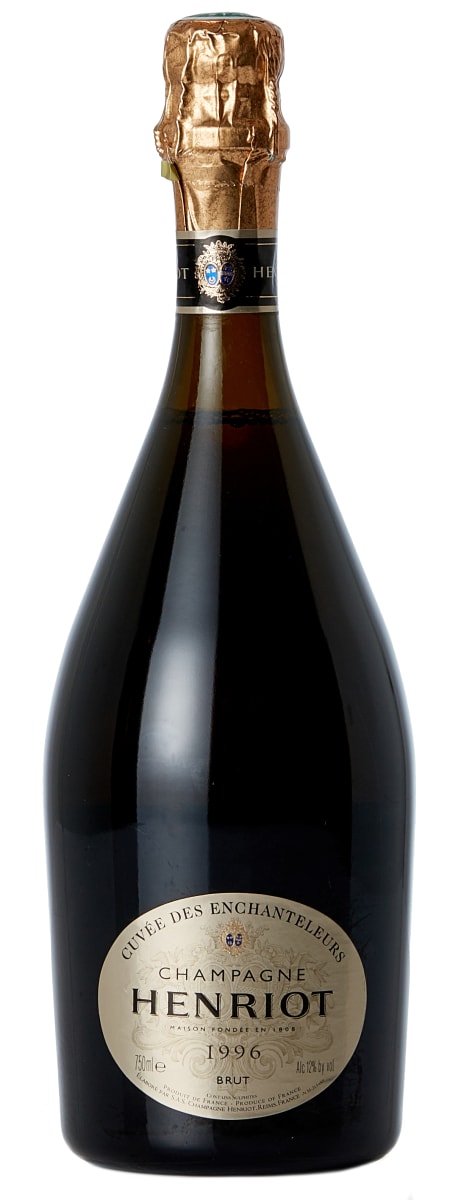Henriot Cuvee des Enchanteleurs 1996
-
Wine
Spectator -
Wine
Enthusiast -
Robert
Parker



Product Details
Your Rating
Somm Note
Winemaker Notes
The name "Enchanteleur" borne by this rare wine refers to the cellar workers in the days when vinification was carried out only in barrels. Their work consisted in particular of piling up the casks on wooden beams. It was said that they "put the casks on chantiers (gantries)", that they "enchantelaient"... They traditionally enjoyed the privilege of making for themselves a small Champagne cuvée produced from the finest wines.
So as to enhance the remarkable character of the 1996 vintage, Champagne Henriot chose to add Pinot Noir's power to the elegance of Chardonnay (in the majority). Supplies came mainly from among six of Champagne's most prestigious Grands Crus: Mailly Champagne, Verzy and Verzenay on the Montagne de Reims, and Mesnil-sur-Oger, Avize and Chouilly in the Côte des Blancs.
Professional Ratings
-
Wine Spectator
Tight-grained, with an immediate impression of the sea before forest floor and citrus notes take over. This is bright and fresh, with plenty of spice, toast and candied berry flavors, backed by a firm structure. The finish just keeps going. Best from 2012 through 2040.
-
Wine Enthusiast
With all the extreme intensity of this vintage, this wine brings even more. The start of cookie yeast and toast character, a vibrant mineral texture, hints of spice, green herbs and a final white peach flavor. It is still young, just keep aging.
-
Robert Parker's Wine Advocate
The 1996 Brut Cuvee des Enchanteleurs is one of the softer, more forward 1996s readers are likely to come across. Smoke, cantaloupe, pear, flowers, mint, sweet baking spices and apricots are some of the notes that emerge from this layered, sublime Champagne. The finish is long and polished.
Other Vintages
1998-
Wine
Spectator -
Wine &
Spirits




Founded in 1808 by Apolline Henriot, Henriot is one of the most historic Champagne Houses with more than two hundred years of heritage and savoir-faire. When she founded the house, it was Apolline's desire to "shine a light on her lands through a Champagne." Guided by a manual about viticulture and winemaking in Champagne written by her great-uncle, she had a profound understanding of the vines and the environment in which they take root, (known today as terroir). Apolline believed that "wine is written in the vineyard," a founding principle that continues to guide the house through today's environmental challenges.
Since 2020, Henriot has focused on the preservation of the vineyards and the terroirs under the leadership of Cellar Master and Vines Director Alice Tétienne. Born and raised in Champagne, she is one of the youngest and the few females in Champagne to hold the position and has an impressive background in viticulture, oenology, and communication. Tétienne was awarded the “Best Winemaker of the Year” in 2020 by Trophées Champenois, named a “Top 100 Master Winemakers” by the Drinks Business in 2023 and shortlisted as "Sparkling Winemaker of the year 2023" by IWC.
She founded Alliance Terroir in 2020, a collective that works together in favor of the preservation of the terroirs in the context of global climate warming and the need to account for environmental and societal challenges. This includes training and support of grower partners through the HVE (“Haute Valeur Environementale”) and VDC ("Viticulture Durable en Champagne") certification processes, to conduct the vineyards in sustainable ways, and adapting to climate change. She has also demonstrated an actionable approach in sustainability through carbon reduction and recycling.
